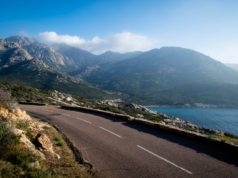The hardest braking point on the Autodromo Nazionale di Monza is at the end of the start/finish straights, the Brembo specialists state.
The driver has to brake hard at 280 km/h on only 159 metres within 1.7 seconds. 2805 kW of power is used here!
The pilots are subjected to 5.8g, while having to step on the brake with 177 kg at the same time.
Monza is the most power sensitive track of the season. More than 70% of the lap is spent at full throttle, more than any circuit of the season. There are four long periods of open throttle, each with an average of 13secs each. The first is the pit straight, followed by the run through the Curva Grande. Then from the Lesmos to the Variante Ascari and finally from Ascari to the Parabolica. The longest time the power unit will be at full throttle is the pit straight, which lasts 16 secs.
Despite the ICE being flat out for most of the lap, fuel consumption per kilometre is relatively low compared to slower tracks. This is due in part to the short length of the track and to maintaining a constant speed throughout. It is also due to the high average speed with low downforce package that reduces the time spent to complete the distance.
The long periods of wide open throttle generate a steady stream of exhaust gas. The energy available in the exhaust due to the high percentage of full throttle time means that the turbo will be at maximum speed for over 80% of the lap.
Despite the heavy braking for the three chicanes, the MGU-K is not significantly stressed in Monza.
Each braking event is very short and there are only three slow corners
In comparison to a corner-rich circuit such as Hungary, the MGU-K barely recovers the maximum energy allowed. To compensate, the MGU-K recovers energy at partial throttle through overloading the ICE. It will be difficult to harvest the max energy allowed by the regulations. The MGU-H will also feed the MGU-K down the straights.
The chicanes will see the cars brake from over 300kph to 80kph but accelerate back up to 300kph in less than eight seconds. This creates a braking event of around one to two seconds. That is quicker than a blink of an eye. It’s important for the car to be stable under braking and acceleration so engineers will pay particular attention to the engine maps and how they interact with the low downforce aero configuration.
































